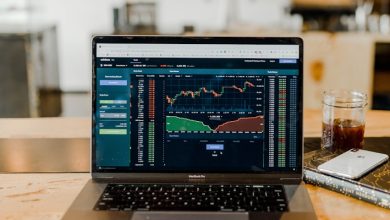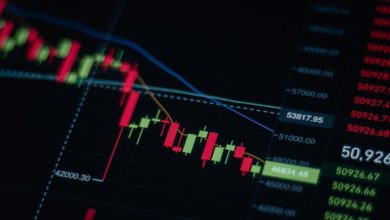How to Develop a Risk Management Strategy for Crypto Trading

- Understanding the importance of risk management in crypto trading
- Identifying common risks associated with crypto trading
- Setting realistic financial goals and risk tolerance levels
- Implementing stop-loss orders and other risk management tools
- Diversifying your crypto portfolio to minimize risk
- Staying informed on market trends and news to make informed decisions
Understanding the importance of risk management in crypto trading
Risk management is a crucial aspect of crypto trading that should not be overlooked. Understanding the importance of risk management in this volatile market can help traders protect their investments and minimize potential losses. By implementing a solid risk management strategy, traders can make informed decisions, set clear goals, and stay disciplined in their trading approach.
One of the key benefits of risk management in crypto trading is that it allows traders to identify and assess potential risks before they become a threat to their portfolio. By analyzing market trends, setting stop-loss orders, and diversifying their investments, traders can mitigate the impact of sudden price fluctuations and market crashes. This proactive approach can help traders navigate the unpredictable nature of the crypto market and make more informed decisions.
Furthermore, risk management can help traders maintain a healthy trading mindset and avoid emotional decision-making. By setting risk tolerance levels, sticking to a trading plan, and staying disciplined, traders can reduce the impact of fear and greed on their trading decisions. This can lead to more consistent results and a more sustainable trading strategy over the long term.
In conclusion, risk management is an essential aspect of successful crypto trading. By understanding the importance of risk management, traders can protect their investments, minimize potential losses, and make more informed decisions in this fast-paced and volatile market.
Identifying common risks associated with crypto trading
When engaging in crypto trading, it is crucial to be aware of the common risks that come with this type of investment. By identifying these risks early on, traders can develop a solid risk management strategy to protect their assets and minimize potential losses.
- 1. Market Volatility: The cryptocurrency market is known for its extreme volatility, with prices of digital assets fluctuating rapidly within short periods of time. This volatility can result in substantial gains, but also significant losses if not managed properly.
- 2. Security Risks: As digital assets, cryptocurrencies are vulnerable to hacking and cyber attacks. Traders must take precautions to secure their accounts and wallets to prevent unauthorized access and theft of funds.
- 3. Regulatory Risks: The regulatory environment surrounding cryptocurrencies is constantly evolving, with new laws and guidelines being implemented by governments around the world. Traders need to stay informed about these regulations to ensure compliance and avoid legal issues.
- 4. Liquidity Risks: Some cryptocurrencies may have low trading volumes, making it difficult to buy or sell large amounts without affecting the market price. Traders should be cautious when trading illiquid assets to avoid price manipulation.
- 5. Counterparty Risks: When trading on exchanges or using third-party services, traders are exposed to counterparty risks, such as the risk of default or fraud. It is essential to choose reputable and trusted platforms to mitigate these risks.
By understanding and addressing these common risks associated with crypto trading, traders can create a risk management strategy that protects their investments and helps them navigate the volatile cryptocurrency market with confidence.
Setting realistic financial goals and risk tolerance levels
When developing a risk management strategy for crypto trading, it is crucial to set realistic financial goals and determine your risk tolerance levels. This will help you make informed decisions and avoid unnecessary losses.
Firstly, it is important to establish achievable financial goals based on your investment objectives. Consider factors such as your financial situation, investment experience, and time horizon. Set specific targets for profit-taking and loss-cutting to guide your trading decisions.
Secondly, assess your risk tolerance level to determine how much volatility you can handle in your trading activities. Understanding your risk tolerance will help you avoid emotional decision-making and stick to your trading plan during market fluctuations.
By setting realistic financial goals and understanding your risk tolerance levels, you can develop a risk management strategy that aligns with your investment objectives and trading style. This will help you navigate the volatile crypto market with confidence and minimize potential losses.
Implementing stop-loss orders and other risk management tools
Implementing stop-loss orders and other risk management tools is crucial in crypto trading to protect your investments from sudden market fluctuations. Stop-loss orders allow you to set a specific price at which your assets will be automatically sold to prevent further losses. This tool is especially useful in volatile markets where prices can change rapidly.
In addition to stop-loss orders, diversifying your portfolio can help spread out risks and minimize potential losses. By investing in a variety of cryptocurrencies, you can reduce the impact of a single asset’s poor performance on your overall investment.
Furthermore, setting profit targets can help you take profits at opportune times and prevent greed from clouding your judgment. By having a clear plan in place for when to sell, you can avoid the temptation to hold onto an asset for too long in the hopes of higher returns.
It’s also essential to stay informed about market trends and news that could impact the value of your investments. By staying up to date with the latest developments in the crypto space, you can make more informed decisions about when to buy or sell assets.
Overall, developing a comprehensive risk management strategy for crypto trading involves a combination of tools and techniques to protect your investments and maximize profits. By implementing stop-loss orders, diversifying your portfolio, setting profit targets, and staying informed about market trends, you can minimize risks and increase your chances of success in the volatile world of crypto trading.
Diversifying your crypto portfolio to minimize risk
One effective strategy for managing risk in crypto trading is to diversify your portfolio. By spreading your investments across a variety of different cryptocurrencies, you can minimize the impact of any one asset performing poorly. This way, if one cryptocurrency experiences a significant drop in value, the overall impact on your portfolio will be less severe.
When diversifying your crypto portfolio, it’s essential to consider a mix of established coins like Bitcoin and Ethereum, as well as up-and-coming altcoins with growth potential. This will help spread your risk across different market segments and reduce your exposure to any single asset class.
Furthermore, diversification can also help you take advantage of various market trends and opportunities. By investing in a range of cryptocurrencies with different use cases and technologies, you can position yourself to benefit from the growth potential of the overall crypto market.
Staying informed on market trends and news to make informed decisions
Remaining up-to-date on market trends and news is essential for developing a solid risk management strategy for crypto trading. By staying informed, traders can make more educated decisions and minimize potential risks. There are several ways to stay informed on market trends and news:
- Regularly check reputable financial news websites and cryptocurrency news platforms to stay informed on the latest developments in the market.
- Follow influential figures in the crypto industry on social media platforms like Twitter and LinkedIn to gain insights and perspectives on market trends.
- Join online forums and communities dedicated to cryptocurrency trading to engage with other traders and share knowledge and experiences.
- Attend crypto conferences and events to network with industry professionals and stay updated on the latest trends and developments in the market.



